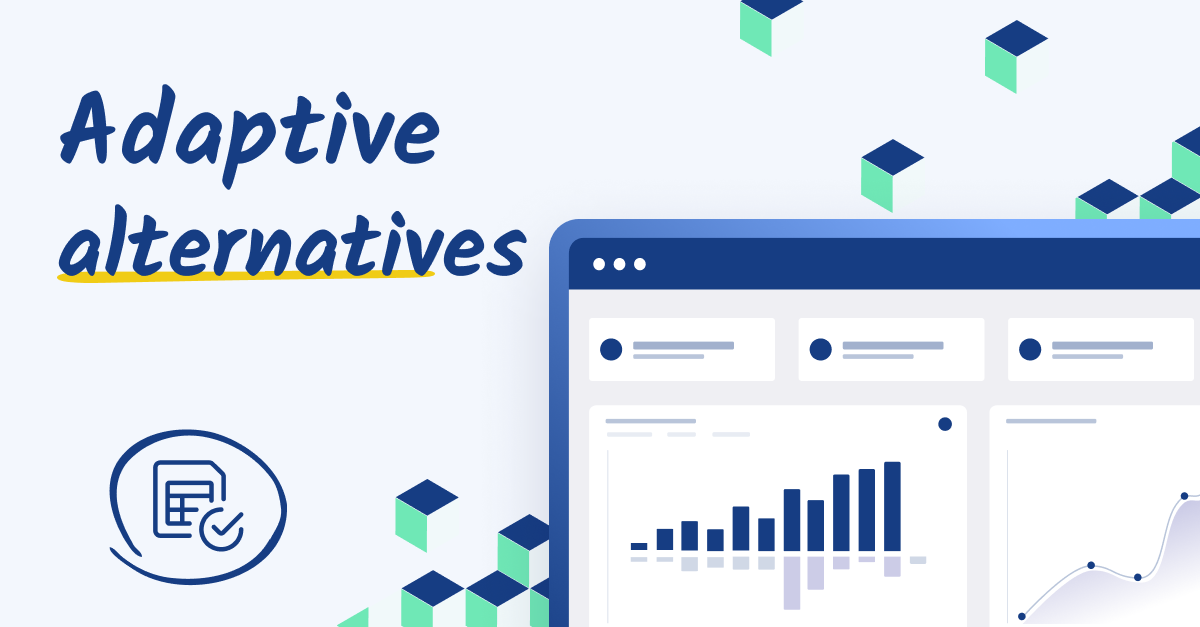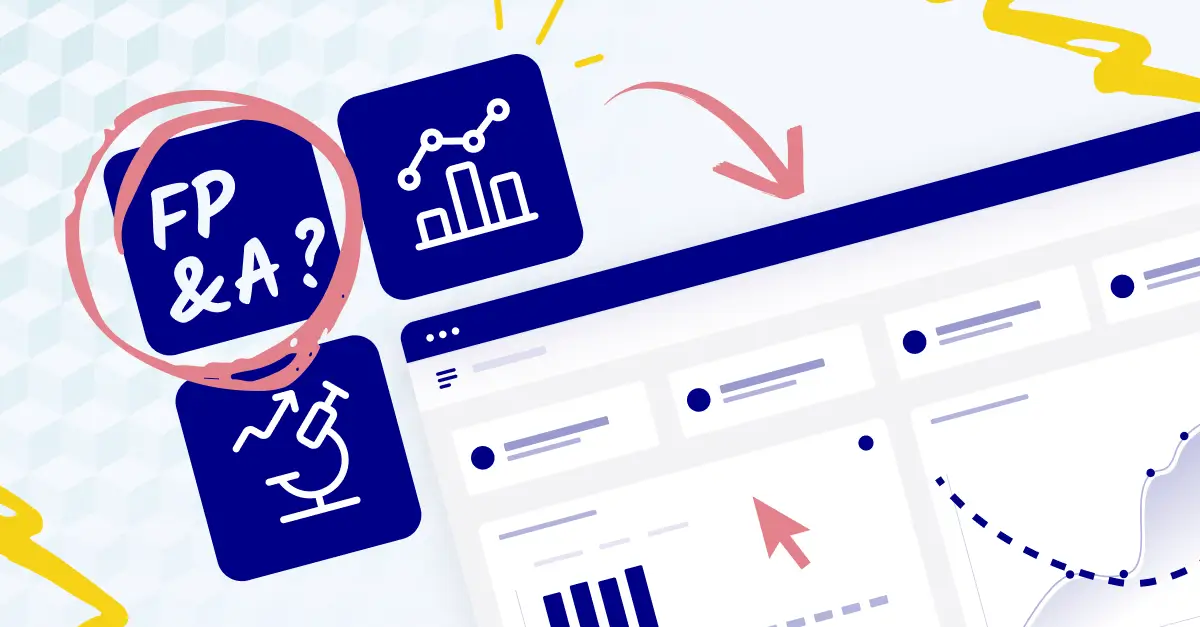Workday Adaptive Planning review: What is Workday Adaptive Planning?

Workday Adaptive Planning is Enterprise Performance Management (EPM) software designed to support and enhance financial operations within organizations.
Similar to FP&A software, it helps streamline and modernize financial planning solutions like workforce planning, modeling, budgeting, and forecasting. This unified suite of financial tools promotes collaboration across the enterprise without manual spreadsheets or outdated legacy systems.
While geared toward large enterprises and divisions of major corporations, Workday Adaptive Planning is also suited for midsize companies.
For organizations already utilizing other Workday solutions, Workday Adaptive Planning integrates smoothly.

Workday Adaptive Planning features
Workday Adaptive Planning utilizes artificial intelligence (AI) and machine learning (ML) to provide various solutions for financial planning, workforce planning, operational planning, and closing and consolidation.
These solutions include:
Financial planning
- Budgeting and forecasting: Build daily forecasts based on real-time data and monthly or quarterly budgets.
- Scenario planning: Explore the possibilities of your financial decisions with endless AI-simulated “what-if” scenarios.
- Analytics and reporting: Generate financial analytics and reports.
- Strategic planning: Collaborate to create strategic plans with scenario analysis and embedded machine learning.
Workforce planning
- Headcount and cost planning: Manage real-time headcount tracking and associated cost analysis to keep hiring plans within budget.
- Strategic workforce planning: Align talent acquisition and development with future business needs.
- Talent planning: Compare multiple what-if scenarios to pinpoint a preferred mix of talent.
- Capacity planning: Allocate personnel resources across projects or departments to optimize workload distribution and meet business demands.
Operational planning
- Sales planning: Manage sales resources by setting quotas and optimizing representative capacity.
- Demand and supply planning: Optimize inventory levels by coordinating between supply chain operations and demand forecasts.
- Project planning: Assess how projects influence overall business finances and operations to optimize investments and resource allocations.
- Marketing planning: Analyze your marketing campaign mix in alignment with sales objectives to maximize the return on your marketing budget.
Close and consolidation
- Period close management: Enable finance teams to finalize reports, reconcile accounts, and verify accuracy in financial statements.
- Global financial consolidation: Consolidate financial data from multiple business units or global entities into a single, unified financial statement.
Workday’s industry-specific features
Adaptive Planning provides financial planning solutions for over 10 specified industries, including:
- SaaS: Adaptive Planning for software companies helps SaaS companies plan, monitor, and analyze subscription bookings and revenue. The financial planning solution provides capabilities for software companies that cover financial budgeting, financial reporting, and more.
- Healthcare: Healthcare FP&A has been challenged with constantly changing laws, regulations, and care options. It’s unsustainable for healthcare companies to run financial plans on spreadsheets. Adaptive Planning for healthcare lets FP&A see deep into their business to improve financial planning, financial reporting, and more.
- Business services: When business services are spread across customers, clients, and projects, it’s challenging to do financial planning on spreadsheets. Adaptive Planning provides business services with tools for managing personnel, projects, financial planning, and other FP&A processes in the cloud.
- Manufacturing: The past year has upended supply chains, customer operations, and consumer demand, so manufacturing financial planning has struggled to adapt. Adaptive Planning gives manufacturers a financial planning solution for financial reporting, operating plans, headcount plans, production plans, and capital expenditure plans.
- Retail: Retail is experiencing unprecedented challenges as consumers move away from brick-and-mortar stores and look for easy, compelling e-commerce retailers. Adaptive Planning provides retail financial planning solutions for retailers’ complex needs. Store managers can use it for financial and headcount planning, corporate finance and operations to model new locations, and FP&A for retail financial planning.
- Financial services: Strong regulatory oversight can bog down FP&A at financial services firms. Adaptive Planning offers an enterprise planning solution specifically for financial services companies to manage FP&A, financial reporting, and even compliance.
Workday Adaptive pros and cons
All platforms come with their own pros and cons. Here’s a closer look at where Workday Adaptive excels (and falls short).
Pros
- Is suitable for large enterprises
- Automates financial reporting
- Speeds up financial consolidation and financial close
- Offers industry-specific financial planning templates and functionality
- Integrates with existing Workday solutions
Cons
- Has high implementation costs
- Has a high learning curve
- Provides unclear pricing, leaving ultimate costs unknown to potential users
- Focuses on enterprise, adding many features and capabilities not financially sustainable for small and midsize FP&A teams
Workday Adaptive Planning pricing
Workday offers two paid subscription plans, with a 30-day trial offer of the base planning subscription.
Workday Adaptive Planning subscription
- Pricing: Varies based on specific business needs.
- Includes: Connectivity with ERP systems or General Ledger (GL) systems, unlimited versions for financial scenarios, and unlimited what-if scenarios for financial forecasting.
Workday Adaptive Planning & Consolidation
- Pricing: Varies based on specific business needs.
- Includes: All features of Workday Adaptive Planning, additional close and consolidation capabilities, enhanced connectivity with any ERP or GL, and unlimited what-if scenarios to explore various financial outcomes.
Workday Adaptive Planning customer reviews
While some Workday customers appreciate the platform, others struggle. Let’s take a look at what some Workday customers have to say about the platform.
- “Good when all is set up, but hard to set up.” - Verified user in Marketing and Advertising
- “The platform is based on the Excel spreadsheet, so it doesn't require a separate training for users. Workday has a complex algorithm for setup. Since the platform requires more customized settings before use, more engineering skills are needed for administrators in the implementation stage.” - John C.
- “Good as a standalone planning tool but not when integrated with Workday ecosystem” - Verified user in Accounting
- “Not intuitive at all.” - Nina K.
- “Unfortunately, our implementation went extremely poorly so it is virtually unusable and I can't comment on the other features.” - Verified user in Utilities
Top Workday Adaptive Planning alternatives
Given Workday Adaptive’s higher price point, exploring alternatives can uncover tools that might be better aligned with specific operational requirements, cost constraints, or usability preferences.
Let’s look at a few worthwhile alternatives.
1. Cube
.png?width=238&height=71&name=horiz-wordmark-ultramarine%20(2).png)
Cube is a flexible and scalable FP&A software that integrates seamlessly with familiar tools like Excel and Google Sheets, minimizing the learning curve for new users. It supports extensive data integration, security, and real-time planning capabilities, and most customers are up and running in two weeks or less.
Cube employs advanced reporting, analytics, and financial modeling processes to help finance leaders make informed decisions based on strategic goals and business objectives. The financial planning features can reveal break-even analyses, sales forecasting, and multi-scenario planning.
Key features:
- Audit trails: Provides comprehensive tracking of all changes made to the data to promote transparency and accountability
- Configurable data hierarchy: Allows for customized mapping of data sources to meet specific organizational needs
- Access control: Maintains security and integrity by managing who can view or edit financial information
- Open API: Empowers developers to integrate Cube with existing systems
- Customizable dashboards: Tailors dashboards to your needs to enhance the visualization and accessibility of key financial metrics
- Ad-hoc reporting: Quickly generates reports based on specific data needs without lengthy setup times
- Three-statement model: Creates, updates, and analyzes income statements, balance sheets, and cash flow reports in one platform
- Variance analysis: Reveals the reasons behind budget variances
- Scenario modeling: Creates flexible and dynamic scenarios for headcount planning, budgeting, and annual financial planning to prepare for various financial outcomes
Pricing:
2. Anaplan

Anaplan is a business planning, forecasting, and performance management software tailored for finance and FP&A functions. Marketed primarily towards large enterprises, it offers tools that facilitate complex decision-making and integration for spreadsheet-centric business planning.
Key features:
- In-memory processing: Allows modification of multiple scenarios simultaneously
- Scenario planning: Supports multi-dimensional analysis for "what-if" situations
- Forecasting: Provides predictive insights to anticipate market conditions
- Workflows: Digitizes and streamlines business processes
- Compensation plan modeling: Assesses the financial impact of employee performance plans
- Data hub: Secures hosting for essential data needed for planning
- Integrations: Connects with systems like Salesforce and supports API for broader integration
Pricing: Pricing information for Anaplan is not publicly available.
3. Planful

Planful is a cloud-based financial performance management tool primarily designed for FP&A teams. It aids in streamlining planning, closing, and reporting processes to reduce reliance on manual operations.
Planful supports decision-making but may not be the best fit for fast-growing companies needing advanced financial consolidation and management reporting.
Key features:
- Financial planning: Streamlines the budgeting and forecasting processes to enhance financial accuracy and speed
- Financial close management: Automates and accelerates the financial month-end close process
- Management reporting: Provides tools for creating detailed financial and management reports to see
- Cash forecasting: Offers capabilities for predicting cash flows to aid in planning for liquidity
- Scenario planning: Supports scenario and what-if analyses to prepare for future financial outcomes
- Workforce planning: Integrates HR data to aid in staffing decision-making
Pricing: Pricing information for Planful is not publicly available.
4. Vena Solutions

Vena Solutions, known as Vena Complete Planning, is a cloud-based FP&A tool that integrates with Excel. It targets teams who prefer to stay in an Excel-based environment looking for streamlined budgeting, forecasting, and financial planning processes.
While an enterprise company can use Vena, it's best for small- to medium-sized businesses.
Key features:
- Excel integration: Seamlessly works within an Excel-based framework
- Budgeting and forecasting: Offers tools for financial planning and projections
- Scenario planning: Supports detailed what-if analyses to explore financial outcomes under various scenarios
- Financial consolidation: Simplifies the financial close process with tools for data aggregation and validation
- Financial reporting: Enables detailed financial reporting and analysis with visualization capabilities
Pricing: Pricing information for Vena is not publicly available.
5. Prophix
.png?width=353&height=83&name=prophix-logo%20(1).png)
Prophix offers a financial management platform that aids business decision-making through budgeting, planning, financial management, and analysis tools. It can generate reports and dashboards to give organizations a clear picture of how their business is performing financially.
Key features:
- Financial modeling: Includes tools for budget forecasting and investment decision-making
- Scenario planning: Supports multiple scenario analyses to understand financial impacts
- Data visualization: Provides tools for creating visual representations of financial data
- System integration: Designed to integrate with ERP and CRM systems
- Real-time reporting: Features tools for real-time financial reporting and dashboarding
Pricing: Pricing information for Prophix is not publicly available.
6. Oracle Essbase

Oracle Essbase, formerly known as Hyperion Essbase, is a comprehensive business analytics and Online Analytical Processing (OLAP) database solution used for EPM. It facilitates complex data analysis, supporting multi-dimensional scenario planning and forecasting, which aids businesses in strategic decision-making.
Key features:
- Real-time data analysis: Enables immediate data processing for immediate insight generation
- Integration with Microsoft Office: Allows direct interaction with Excel
- Forecasting and scenario planning: Assists financial planning with predictive capabilities
- Visual data interfaces: Supports the creation of dynamic charts and graphs for better data presentation and collaborative work
Pricing: Pricing information for Oracle Essbase is not publicly available.
7. Oracle Hyperion Planning

Oracle Hyperion Planning is an extension of Oracle’s EPM. It offers a centralized solution for planning, budgeting, and forecasting that integrates financial and operational planning processes. The platform aids business predictability and offers flexibility in deployment across various environments.
Key features:
- Time efficiency: Reduces the time required for planning, budgeting, and forecasting
- Accuracy: Improves the precision of financial plans and forecasts
- Microsoft Office integration: Utilizes a Microsoft Office-based interface to ease the learning curve
- Real-time updates: Ensures immediate refresh of plans and reports upon updates
Pricing: Pricing information for Oracle Hyperion Planning is not publicly available.
8. NetSuite Planning and Budgeting

NetSuite, another Oracle offering, is a comprehensive cloud-based suite for business management, offering tools for ERP, CRM, and eCommerce. It’s designed to increase productivity and efficiency by automating and simplifying business processes across financials and operations, providing real-time insights.
Key features:
- ERP platform: Integrates applications for managing accounting, order processing, inventory, production, supply chain, and warehouse operations
- Accounting software: Handles transaction recording, payables and receivables management, tax collection, and book closing
- Global business management: Manages multiple subsidiaries, business units, and legal entities from a single ERP system
- CRM: Manages customer relationships, quotes, commissions, sales forecasts, and partner relationships
- Human resource management: Integrates HR, payroll, and financials to enhance workforce management
- Analytics & reporting: Offers real-time visibility and customizable reporting
- Infrastructure: Ensures security, availability, and data management with global data centers
- Platform: Allows IT customization of the core NetSuite product
Pricing: Pricing information for Oracle Netsuite is not publicly available

The bottom line on Workday Adaptive Planning
Workday Adaptive Planning provides financial planning tools for large corporations and enterprises aiming to streamline and enhance their financial operations.
But it’s not the right software for everyone. Smaller or mid-sized businesses looking for software that’s easier to implement (and use) might want to look into a Workday alternative.
Ready to explore your options? Request a Cube demo to see how it combines the familiar ease of spreadsheets with powerful cloud capabilities—ideal for growing businesses.




.png)









.png)

![Workday Adaptive Planning: Complete review & top alternatives [2024]](https://www.cubesoftware.com/hubfs/Workday-Adaptive-Planning-Review%20%281%29.webp)


.png?width=238&height=71&name=horiz-wordmark-ultramarine%20(2).png)



.png?width=353&height=83&name=prophix-logo%20(1).png)




![The 11+ best Oracle Essbase alternatives [updated for 2024]](https://www.cubesoftware.com/hubfs/oracle%20essbase%20featured%20image-1.png)